Three Days In Tokyo With The Creators Of Silent Hill, Siren, And Slitterhead
I’m two floors below ground, surrounded by screaming drunks and breathing in enough secondhand smoke to take at least a decade off my life. I’m here with Keiichiro Toyama, most well-known for creating the Silent Hill series, but also the creator of the Siren and Gravity Rush series, and most recently, the founder of Bokeh Game Studio, making the upcoming Slitterhead.
A cramped, old, smoky bar in a shopping mall deep beneath a Yokohama train station might not immediately appear conducive to game development, but things are starting to click in my head. Mixed with pounds of nicotine, the air in the bar is communal and light. It’s also distinct compared to the more modern, formulaic streets immediately above our heads. In an hour or two, we’ll walk a few blocks over and hit the nightlife and drinking alleys. Tucked within the immensely larger Tokyo surrounding them, these areas have their own distinct senses of space, much like the worlds of Toyama’s games. He’s been living in Yokohama for decades, he tells me. Something like Gravity Rush – with its unforgettable, topsy-turvy, boozy, and somewhat seedy world – makes a lot more sense to me now.
I’m in Japan to learn about just that; how where you live affects what you make. This time, it’s through the lens of one single developer: Bokeh. For three days, I spend time with Toyama, concept artist Miki Takahashi, and renowned composer Akira Yamaoka in vastly different parts of Tokyo, learning about the city’s ever-changing face, what they love and what they miss, and how decades of living here have influenced their works all the way up to Slitterhead.
First stop: a former black-market and well-known place to drink the night away.
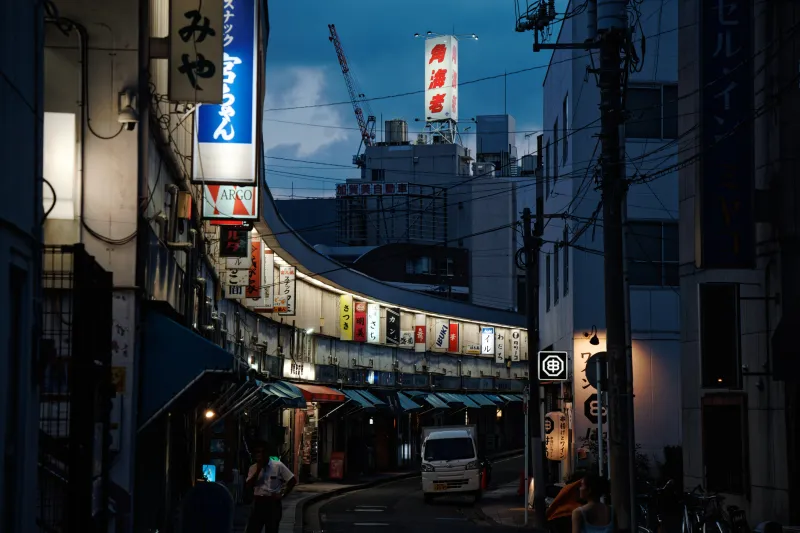
Photo courtesy of Keiichiro Toyama
Running Through The Streets With Keiichiro Toyama
RUNNING THROUGH THE STREETS WITH KEIICHIRO TOYAMA
Toyama is darting – somewhat carelessly – across the streets of Noge, Yokohama, taking pictures of whatever he finds interesting while Bokeh PR and business development manager and translator William Yohei Hart and myself try to keep up. Toyama’s had a few drinks. It helps him socialize, he says. And now he truly seems in his element.
An hour earlier, we were talking in the smoky, boozy halls of Sakuragicho Pio City, an underground shopping mall right next to Sakuragicho Station. It feels spat out of a different era – mainly because it is. The yellowed walls and slick tile floors feel familiar, if a little dirty. It’s like we’ve been transported back to the 1990s, as if time stopped below the modern streets above our heads.
Toyama takes me to Pio City to visit an izakaya – or an all-you-can-eat-and-drink bar. We huddle around our tiny table while older men chain-smoke cigarettes and drink beers. Toyama orders highballs. A mix of beef, lamb, and cooked vegetables comes out for us all to share. The restaurant is loud but in a friendly way. Customers laugh drunkenly, and the staff runs around frantically yelling to the cooks in the back while running out orders. It is, put bluntly, a perfect place to come and get drunk with friends, filling your stomach with as much alcohol and grease as your body can handle.

“I just love drinking,” Toyama tells me. “I just love the setting. I’m not a big alcohol lover; in terms of I don’t really care about the taste. It’s more about the atmosphere of these places.”
Toyama moved to Yokohama – the second largest city in the country by population and part of the Greater Tokyo Area – after Silent Hill came out in 1999. Even after all this time, he finds Noge exciting. It’s directly influenced his work on the Gravity Rush series and the upcoming Slitterhead.
Noge traces its history back to post-World War II Japan, when, in an effort to get away from American-occupied parts of nearby areas, people fled to the area. It became a bustling black market, where at one time, there were reportedly more than 400 stalls along the area’s main street. Noge has also been a popular destination for jazz artists, and there are still plenty of jazz bars in the area today. Over time, Noge became a popular nightlife district, attracting people from all walks of life who want to eat and drink as much as possible before shambling home for the evening.

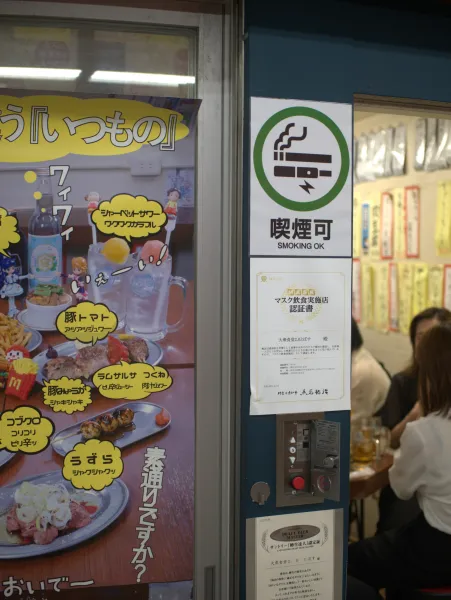
The open atmosphere is what Toyama finds inspiring. Japan, especially compared to, say, America, is an incredibly safe country. But around these parts, where the atmosphere is looser, he likes that anything can happen.
“Even if it’s a drunk that’s just rolling on the floor – I just feel a bit excited about that,” Toyama tells me.
In Gravity Rush and Slitterhead, he says he thinks you can see an area like Noge’s influence. People walk around the game cities talking openly, hanging out, and having a good time. Similar to this izakaya, where just like beer and food, conversations flow endlessly from one topic to the next.
That said, Toyama is, self-admittedly, a shy person. He has trouble talking to people sometimes, and I notice he’s not big on eye contact and directs all his responses to Hart rather than me. Alcohol helps. While we hang out, Toyama drinks two large glasses of Highball. He says he needs a few drinks – especially with a journalist – to open up and talk freely.
“In an ideal world, I wouldn’t have to do any media or any interviews. In that world, I’m completely free,” he admits. “But as a CEO of a company now, I have to be more outgoing, and [I have to] socialize around the world. That part needs some drinks.”
This makes me think Toyama is more of an observer of the atmosphere around him rather than an active participant. It makes sense when you consider how he makes his games.
“When I think of a game, what I do first, I think about the environment rather than characters or story; I think you can see in Gravity Rush all these places that I drew inspiration from,” he adds. “Because when you think of a town or a village, and you think about an ordinary person in that village or town, you get to imagine a backstory about what an ordinary person’s life is like in that place. Which is why it helps to think about characters who are born in that setting. It helps me to think about a story that way better than thinking about a story first.”
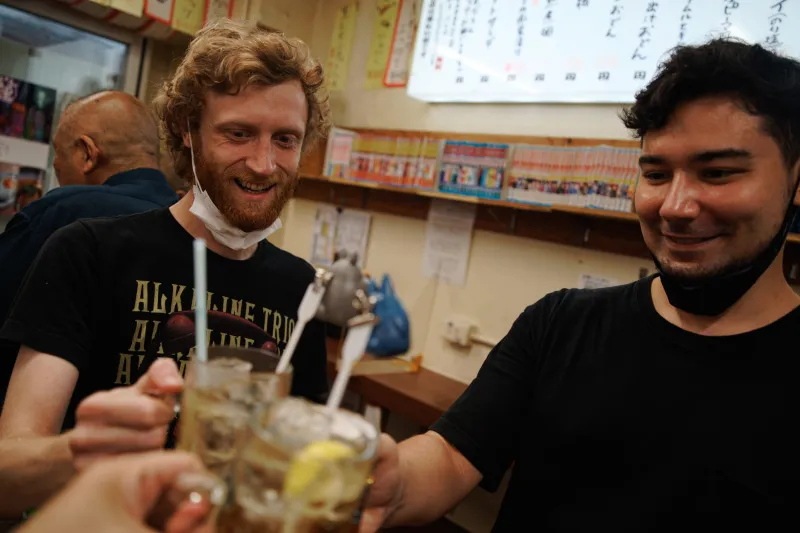
Photo courtesy of Keiichiro Toyama
To capture those settings, Toyama brings his camera with him everywhere he goes and takes pictures of anything he finds fascinating – from beautiful scenic views of the city all the way down to our dinner table. On the one hand, this is obviously his favorite hobby – and a way to quickly gather reference material for his work. On the other hand, as he says, it’s like his own personal time machine. When he looks back at photos he took years ago, he immerses himself in that exact moment like he’s traveling back in time. No matter what in the city changes or disappears, he always has the photos he takes. In turn, his games all have a strong sense of place. It’s easier to remember specific districts or pockets of his worlds than the characters inhabiting them.
Part of that is he misses how Japan used to be. This is largely the reason he brought me to Noge; it reminds him of how the city was 25 years ago. “I have a lot of love for things that are disappearing,” Toyama tells me. He’s a nostalgic person; he’s attached to the past.
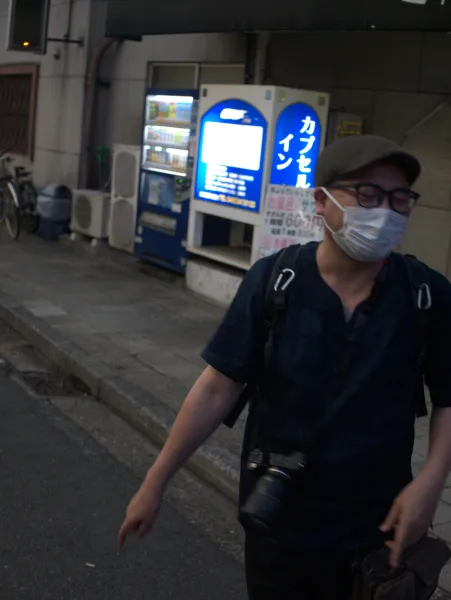
He recognizes Japan’s ever-changing face is partly due to the country’s high level of earthquakes – more than any other country in the world. Older buildings don’t meet modern codes and are torn down to protect citizens. A somewhat ironic fate of killing the past to save the future. But still, Toyama, now in his 50s, loves Noge because it reminds him of an era long since gone – Japan’s economic miracle.
“I was born in 1970,” he says. “It was a period when Japan was rapidly growing – even video games. It was evolving at such a speed. I loved that era. But then, in the early ’90s, Japan suffered a financial crisis. There was a feeling that Japan was going to get more enjoyable and fun, and everything was going to [keep evolving at that rapid pace]. But after that, everything kind of just stalled. Which is why I’m really attached to the era when I was born and lived as a child. That’s why I think I am a nostalgic person rather than a person who just looks forward.”
But Toyama is looking forward – somewhat. Obviously, he’s running Bokeh now, a completely new, independent venture for him. He’s no longer backed by massive companies like Konami, where he made Silent Hill, or Sony, where he made Gravity Rush. He sees his new position at Bokeh as the chance to pass the torch on to younger creators. It’s a changing era; he’s older now and wants to give his younger employees a chance to make their own games.
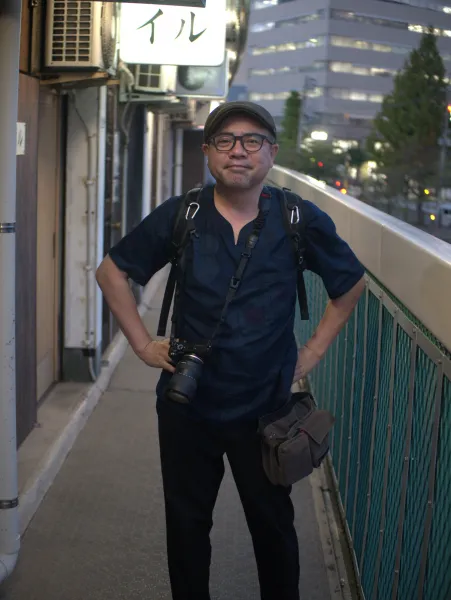
We leave the izakaya and make our way to Noge’s streets. The bars, restaurants, and nightlife just start to wake up as the sun goes down. Toyama’s highballs start to take effect, and he has fully opened up. He dashes around the streets as Hart and I lag behind, using every chance Toyama stops to take pictures as a chance to catch up. Occasionally, Toyama stops and tells me when and where it’d look best to take his photos for this article. He laughs a lot as he runs around, somewhat childishly. It’s funny and memorable – if a bit odd at times.
We end our day at Miyakobashi Shotengai, a long two-story building that stretches roughly 300 feet along the Ōoka river. Tucked inside are around some 60 tiny, old-school bars. Supposedly, this long building was built in an effort to clean up the area in preparation for the 1964 Tokyo Olympics. You might actually recognize it from Yakuza: Like A Dragon.
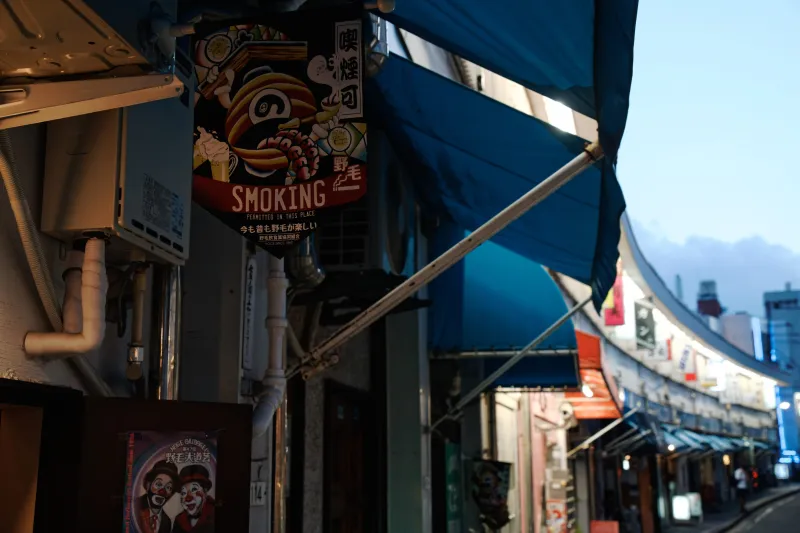
Photo courtesy of Keiichiro Toyama
Toyama says he has plans to go out drinking again later with friends, so we opt to walk around Miyakobashi, overlooking the water. Every few dozen feet, Toyama stops to take some photos of signs, the skyline, and whatever else strikes his interest. You can see a few of these photos throughout this section.
Seeing why he loves the area is easy. It has an old, classic charm. I don’t drink anymore, but I appreciate the relaxed atmosphere. As a big fan of Gravity Rush, I can see how Noge inspired its often-lackadaisical free world.
Toyama might be a deeply nostalgic person, but he also seems like an optimistic person. And a realistic one, at that. Japan is changing, and he’ll always miss the way things were, but he’s not holding onto some cynical bitterness just because things change. After all, the ever-changing times made Bokeh possible for him. I’d argue he’s more forward-looking than he may admit.
“I would want to see the Edo era of Japan if I could, but I can’t,” he tells me. “And I understand that I can’t. There are some things that you can’t do. I do love the old, and I do love these places. But I’m not against evolution and things changing.”
“I think Tokyo is a place that always keeps changing. But it also leaves something for us to be attached to. It’s giving us good memories, and then it’s going off to the next stage.”
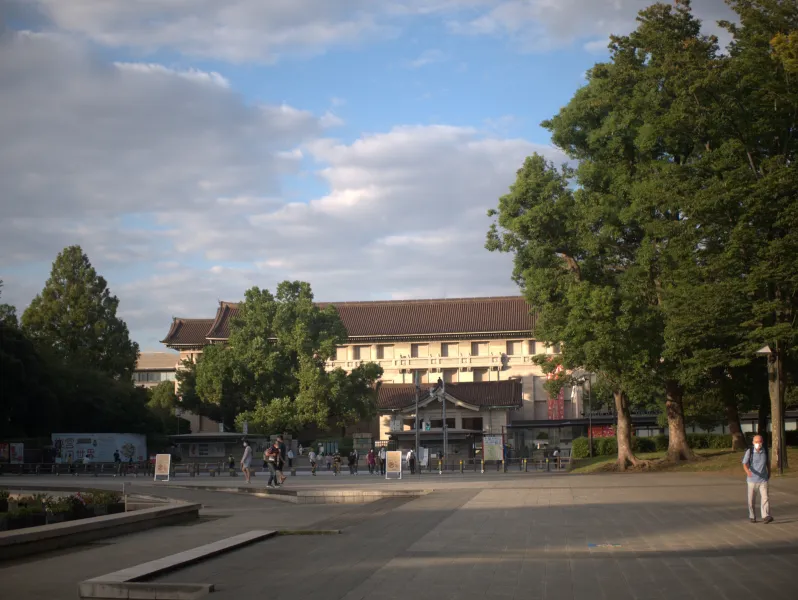
Peace And Dread With Miki Takahashi
PEACE AND DREAD WITH MIKI TAKAHASHI
Concept artist Miki Takahashi has spent her entire life coming to Ueno Park. After a week of running around the Tokyo summer heat, it’s easy to see why. Compared to practically everywhere else you can go in the heart of the city, Ueno might be one of the only places quiet enough that you can hear yourself think.
“The truth is, I really love being by myself,” she tells me as we walk around the gigantic park. “There’s a simplicity to being alone.”
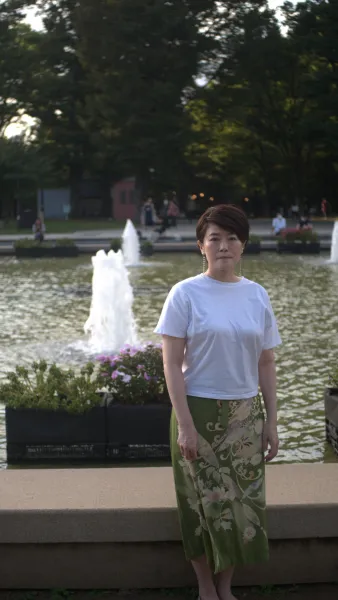
While Takahashi has worked on non-horror projects, such as the Knack series and Okage: Shadow King, she’s more well-known for her work on the Siren series and now Slitterhead. Which is to say, dark, violent, and scary worlds. And yet, she’s the only person I interview on this trip – from Bokeh or otherwise – that doesn’t take me to a large metropolitan area. The best word to describe our interview location is peaceful. We spend an hour walking around the quiet park musing over the idea of something so serene being stuck in the middle of the chaotic city.
The 133-acre Ueno Park opened on October 19, 1873, making it the first public park in the country. It’s home to numerous museums, such as the Tokyo National Museum and the Tokyo Metropolitan Art Museum, as well as a handful of shrines dotting the area. The giant Grand Fountain sits in the middle, and the massive Shinobazu Pond takes up a large portion of the west side. There’s a fancy Starbucks in the middle, too. And if you’re interested, as Takahashi points out, right off the park grounds is the newly re-built Ueno Okura Theater, also known as the “Capital of Pink Films.” Pink films are essentially softcore pornography.
One of the big draws is the park’s roughly 1,000 cherry trees along the main path. In the spring – often between March and April – cherry blossom season brings a reported 2 million people to the park. Luckily, it’s September, and the early evening, so the park is relatively clear.
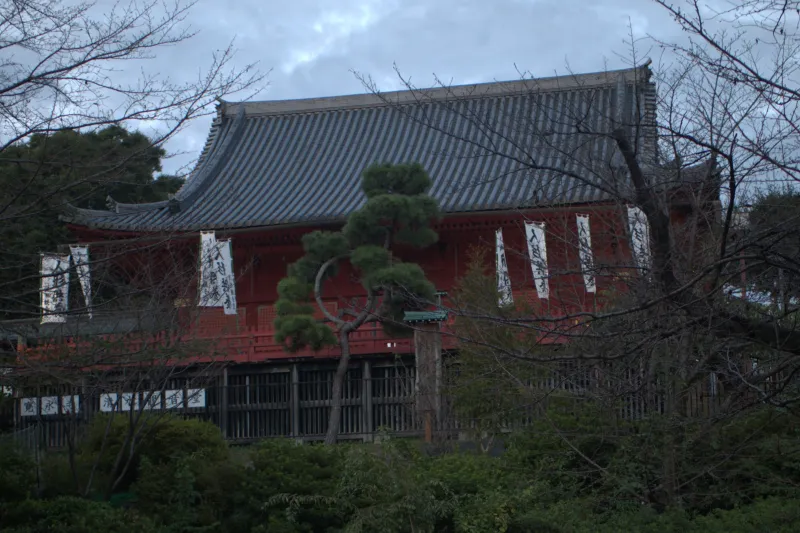
“This area is where I come to reset my mind,” Takahashi says. “The kind of worlds I like are very quiet, silent worlds. The pictures I draw from those worlds, I’m not deliberately trying to make them scary. I’m only drawing the kind of silent worlds I enjoy, so they just naturally come out that way.”
To her point, Takahashi’s art is not outwardly scary, but it does build a sense of unease the more you look at it. Take, for example, her art for Slitterhead. The sparse black and white paintings of creatures that look equal parts familiar and otherworldly feel almost like nightmares visualized into something tangible. Like something you recognize but can’t define.
Takahashi is an admitted fan of horror – her favorite movies are The Exorcist and The Omen – so, as she says, it’s natural that influence will come out in her work, both intentionally and unintentionally. But she sees her own works as more subtextual than explicit. “I do try to draw things that don’t depict the horror straight-on but instead evoke that feeling of incoming dread,” she says.
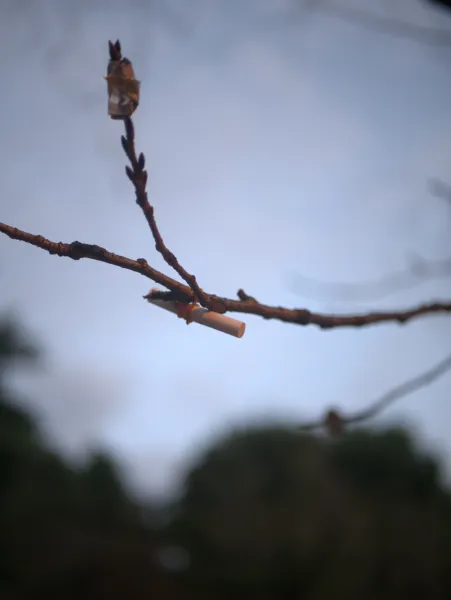
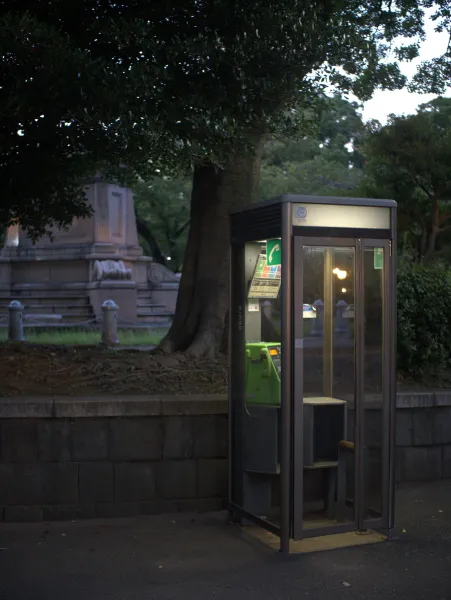
As a kid, Takahashi’s grandfather would often bring her to Ueno Park; they’d visit the art museums together. She’s always lived near the area. She also points out that she lives in an Edo-period house on a hill these days. Like the park, she says her house is surrounded by trees and that it’s “very quiet and peaceful.”
She’s never even spent much time away from Tokyo. She loves it here. And even though some people we interviewed on this trip lament the way Tokyo is losing some parts of its older self, Takahashi sees things differently. She says the way old and new art exist side-by-side is important to her. As is the fact that it’s a comfortable place to be an artist. “I think it’s a highly individualistic place, Tokyo. People don’t meddle or interfere with you here. For a creative person, that’s a great thing.”
“I think Tokyo has managed to maintain a good balance,” Takahashi says. “New things continue to be created year after year – I would call it the metabolism of the city – and it’s something that is necessary. But Tokyo also preserves its old parts, and I think that’s good.”
As an artist, I get the sense that Takahashi is fueled more by feeling than intention. Whatever comes out of her hands is what comes out. She says she loves being alone, but on the other hand, she creates art to communicate.
“I try to express my personal feelings and experiences, all of that, in my work,” Takahashi says. “That’s how I can share those things with others.”
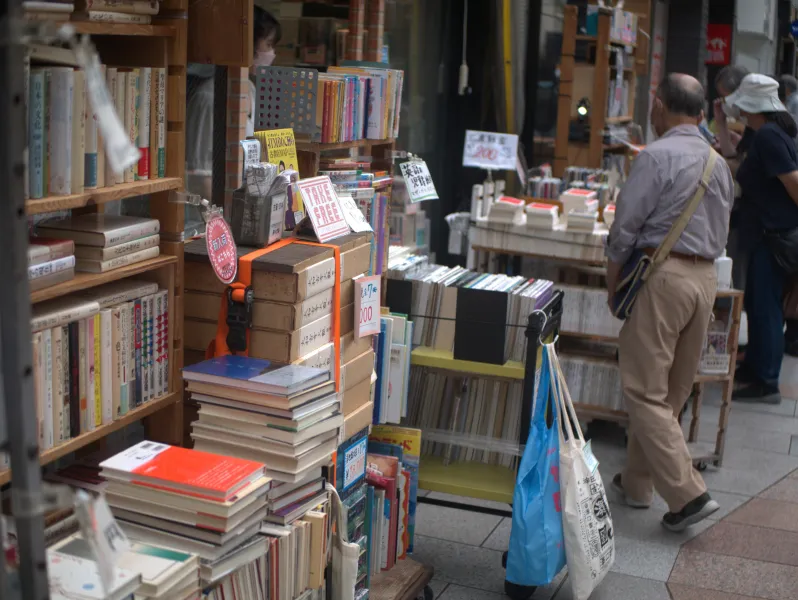
Coffee And Cigarettes With Akira Yamaoka
COFFEE AND CIGARETTES WITH AKIRA YAMAOKA
In a lot of ways, composer Akira Yamaoka’s creative life – not to mention his career and livelihood – is tied to Jinbōchō, a small, curious pocket of Tokyo just north of the imperial palace. He got his start here, but the area looks different these days.
More than 25 years ago, not far from where we’re beginning our trip, right outside the Jinbōchō train station, he was working on the game that would define his life – the original Silent Hill. Back then, he was composing the game’s soundtrack, a hodgepodge of various influences from American, guitar-driven rock, to harsh industrial noise, to traditional Japanese folklore and children’s stories. He recalls coming to Jinbōchō a lot in those days, going out to eat and to cafes with Yamaoka (Slitterhead is actually the first game the two have collaborated on since then). In the late 1990s, the area was chaotic, he tells me, as we walk around its decidedly non-chaotic streets. It was disorganized.
Historically, Jinbōchō has always been an area for creatives, academics, and the like. Yamaoka is just one of many who made their careers in the area’s once messy streets over the last 100-plus years. And as far as he sees it, it’s that mess that made this place a creative hub.
“When you think about older artists, writers, and researchers from the past, their rooms were always disorganized and messy,” he tells me as we walk around. “I get the feeling that being disorganized like that, that’s where creativity springs from. That’s how things are created.”
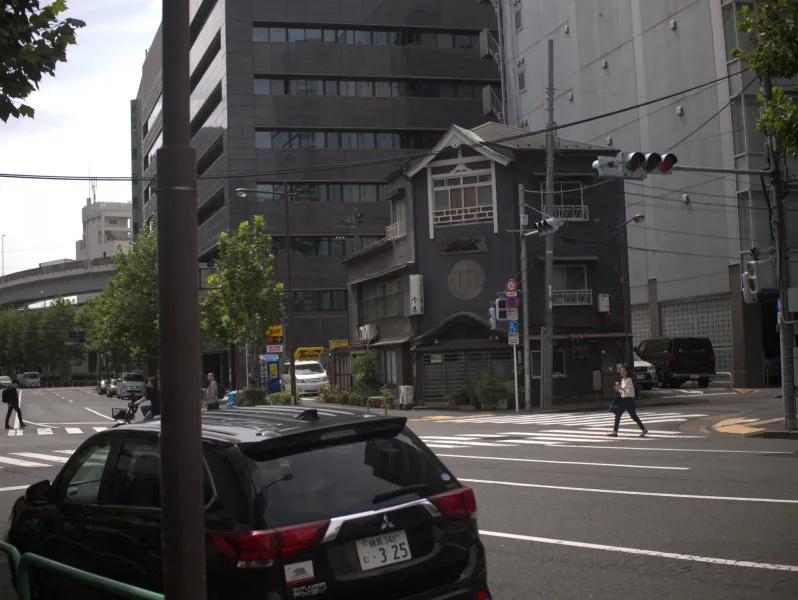
In the late 19th century, Jinbōchō became the home of numerous universities, which, of course, attracted bookstores catering to the rise in students. It’s retained its status as a destination spot for readers for well over 100 years. Jinbōchō is now known as Tokyo’s “Book District” or “Booktown,” and in fact, as you walk around the area, you’ll come across dozens upon dozens of tiny bookstores, most quite literally falling out into the streets. Interestingly, many face north to keep the books from being damaged by direct sunlight.
Most of these stores are independently-owned, second-hand book operations. Floor-to-ceiling shelves line the shops, and littering the sidewalks outside are dozens of bookcases filled with hundreds of books to look through as you walk by. It’s like an open-air market, but rather than the smell of fresh ingredients, the air is filled with the stale musk of old paper and ink. In 2001, when the Ministry of Environment launched its list of 100 interesting-smelling sites around Japan, Jinbōchō’s distinctive book smell made the list, though, as The Japan Times points out, it was “heavily debated.”
To borrow Yamaoka’s own words, this part of Jinbōchō feels chaotic; there’s no discernable organization to each store that I can see. Rather, each seems like a treasure hunt of sorts; you walk in without a shopping list and walk out with bags full of weird, forgotten books you’ve never heard of.
Look up, however, and you see this pocket of Jinbōchō’s past being swallowed by the major redevelopments and new buildings surrounding it. The area largely retained its history of art and academia until the 2000s, when major redevelopment efforts began, both boosting the local economy and gutting part of the area’s history.
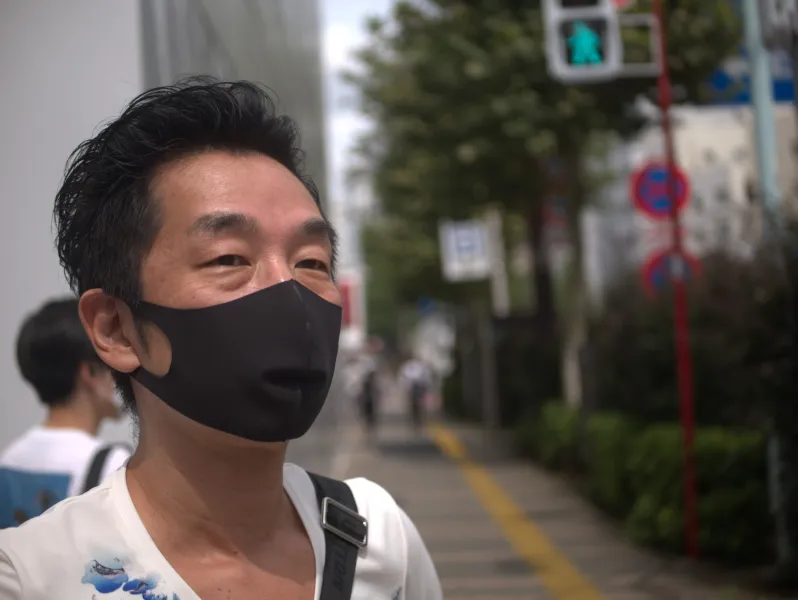
Like everything in Tokyo, Jinbōchō has changed.
“Tokyo, it’s too clean,” Yamaoka says about the newer face of the city. “It’s not interesting to see or to live in.”
“There’s a part of me that thinks it’s really unfortunate,” he later says. “But it’s also like, what can you do? It’s a city, after all, and cities change.”
Yamaoka says he hasn’t been back to Jinbōchō in a while; it looks far different than he remembered. There are a lot more new buildings these days, he tells me. When I ask about the old office he used to work in, he says it’s gone. He can’t go see his own slice of history in the area. He often hesitates to say he’s nostalgic for Jinbōchō, but he seems to have some affection for the area still. “I think it has more to do with the fact that our creative endeavors began in a less gentrified, built-up area,” he says.
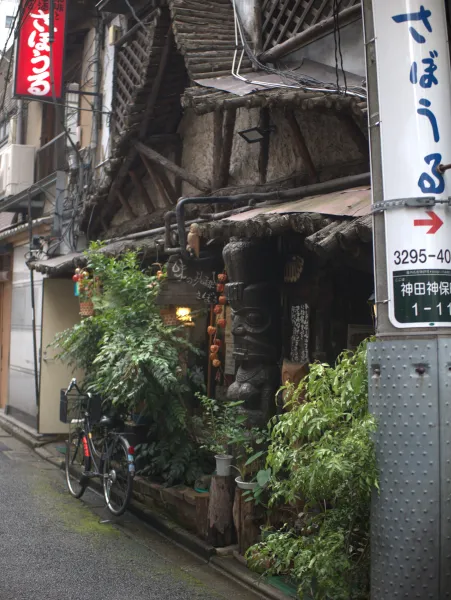
Yamaoka is taking me through Jinbōchō’s alleys, and if I stop looking up, I can see the area’s past holding on. Tucked out of sight of all the new offices around us are old, weird buildings, such as an eel shop Yamaoka and Toyama used to frequent. There’s also Sabouru, a tiki-themed cafe that stands out like a sore thumb even compared to everything else in this alley time has seemingly forgotten. Small parts of Jinbōchō’s disorderly past hold on. Even though these days he’s one of the most well-known video game composers of all time, not to mention writing soundtracks for massive Netflix series such as Cyberpunk: Edgerunners, Yamaoka seems to do the same. When I asked him to take me somewhere that inspires him, he took me to walk the same old streets he did nearly 30 years ago before becoming a name.
Our conversations drift to small talk about the various little details about the area, such as its signature food. Besides bookstores, Jinbōchō is also known for its curry restaurants, which are all over the area. As we talk about this, Yamaoka remembers an adage.
“Do you know about the ‘Three Cs you Should Not Marry’ that Japanese women talk about now,” he asks. “It’s ‘creator,’ ‘cameraman,’ and ‘men who make spicy curry.’ They call those the “Three Cs.”
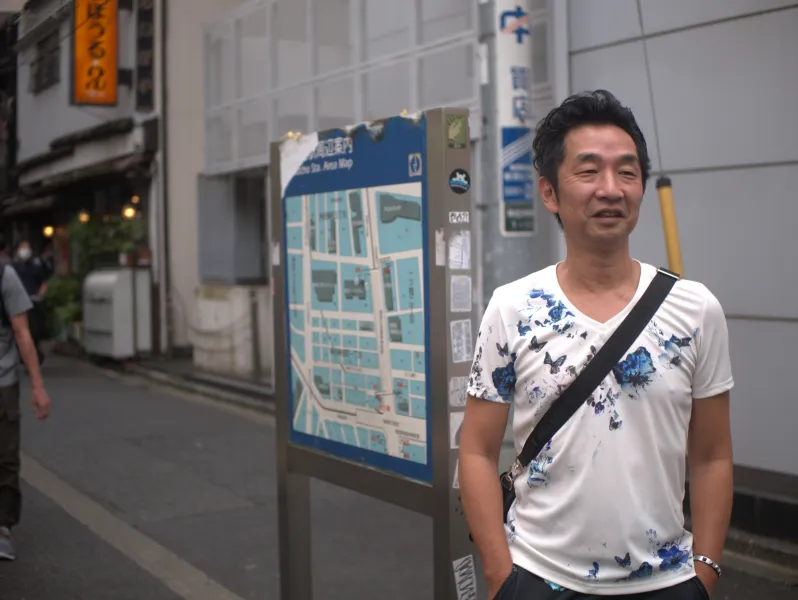
“I feel like maybe I can understand the spice one, but why a cameraman of all people,” I reply.
“Yeah, I wonder why!”
Hart pipes in with his own thoughts: “I noticed musicians aren’t in there.”
“Oh, actually, we used to have the ‘Three Ms You Shouldn’t Marry,’ too,” Yamaoka says. “Musician… and I can’t remember what the other two were.”
Off the main streets, our walking speed slows down. At one point, we even stop in the alley for several minutes, just hanging out while we talk. Conversations drift to trivial chat, pleasant and inconsequential. Stepping away from the new – almost like we’re going back in time to a different era of Tokyo – has slowed our natural rhythms.
///
We meander on before finding our way into a coffee shop tucked into the basement of an old building. It’s dim and quiet. Only a few customers are in the cramped space – one far in the corner reading a book and a small group across from him quietly talking over their drinks. It’s a quaint little spot away from the street noise above, a blink-and-you’ll-miss-it type of place. Most apparent is the smell. Walking in the front door, a shotgun blast of cigarette smoke hits you in the face.
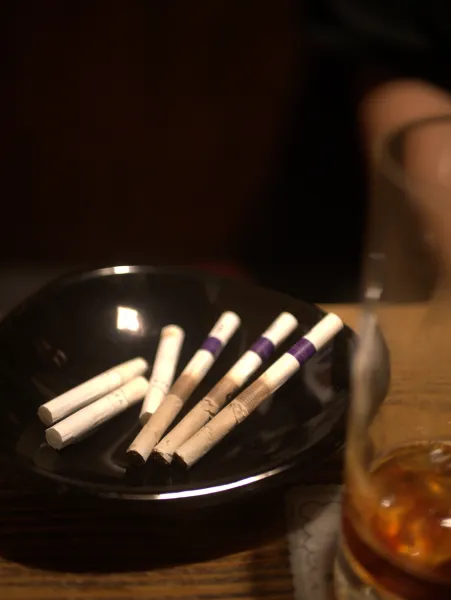
Twenty years ago, reportedly, 50% of Japanese men smoked. These days, that number is closer to only 25%. Reportedly less than 10% of women now smoke. In April 2020, a new law banning indoor smoking came into effect. However, unlike, say, America, there are exceptions to the rule. Mainly “private homes, hotel rooms, cigar bars and some small-sized restaurants and bars that were opened before April 2020.” Judging by the coffee shop’s old interior and faded hand-drawn dessert menus, it’s safe to assume this place was built long before then.
We sit down and order iced coffees, and Yamaoka and Hart begin smoking as we talk. One cigarette turns to two, two to three, and eventually, the entire ashtray is filled. I recently quit smoking, but I pop in a piece of nicotine gum so I don’t feel too left out.
Cities, neighborhoods, and even specific buildings and the people within them all have their own distinct rhythms. For example, Shibuya, with its thousands of people all walking at once, has a fast rhythm. No one is stopping in its alleys to have an idle chat; they’re constantly going where they need to and doing it as fast as possible. In comparison, Jinbōchō is slower, but not by too much. There’s still a lot of noise and foot and car traffic. But in its alleys, and especially down here in this basement coffee shop, its rhythm slows to a near-crawl. When you’re in Shibuya, you match its rhythm; you walk fast and stay out of people’s way. If you talk to someone, you do it quickly to move out of the way of the next person. But down here, you let conversations drift. You let comfortable silence fill the air while you think about what to say next. You take slow sips of your drink or long drags of your cigarette. You nod along to conversations as if individual syllables are the kick and snare of a drum.
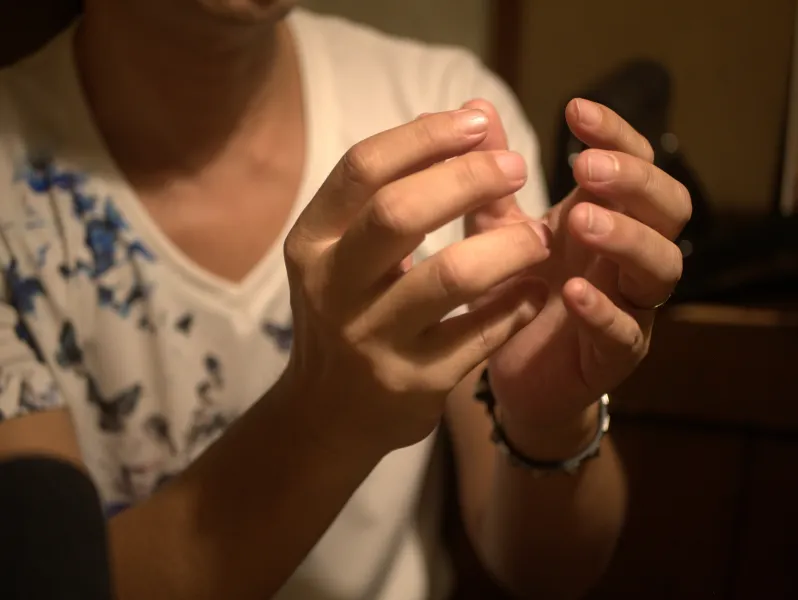
“Even more than the towns or cities, I feel like Japan as a country has that,” Yamaoka says. “You can say that about many places in the world – Asia, China, America, and Japan, too. I feel there’s a distinctive rhythm of Japan – and I mean Japan as a whole. Van Halen, for example, I think they’re quintessentially American. Their grooves, I think, would never come out of Japan.”
“But I think Japan’s groove has to do with the way we always attempt to harmonize and reconcile ourselves with the people around us,” he adds. “We look around us and say, ‘Oh, they’re doing it like that, so I’ll do this.’ […] What that example shows, I think, is that Japanese people leave a space to synchronize with each other. As Japanese, we all have our individual rhythms, but the ‘Japanese groove’ is a sense of rhythm based on harmonizing with those around us. That’s our national character and how we go about our daily lives.”
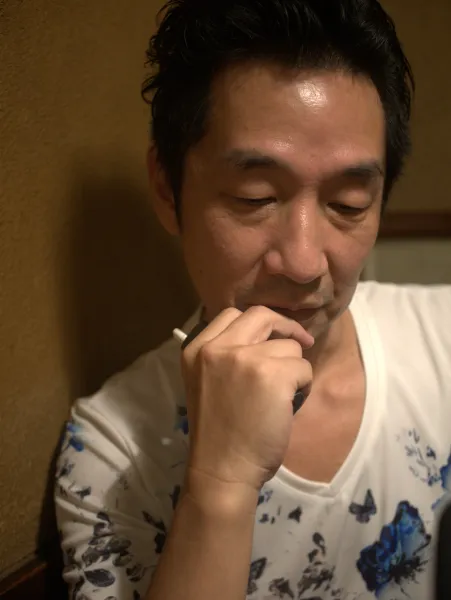
A counterpoint, however, that we talk about is Japanese musicians’ knack for being genre-fluid. One contemporary example is Maximum The Hormone, who, in the course of one song, goes from trash metal to deathcore, all the way to J-pop and electronica. Yamaoka’s work also runs the gamut of genres. It can be dark and scary. Or it can be soft and meditative. Or in the case of Slitterhead, it can be loud and abrasive. His music is full of different rhythms and BPMs, and never sticks to one style. You could also say it’s in stark contrast to the idea of harmonizing with those around you when you’re creating dissonant music that’s hard to follow.
Yamaoka says this genre fluidity is something he thinks about often and something directly related to his hopes for the Slitterhead soundtrack.
“Foreign people have this impression of Japanese, I think, that they are very quiet and unassuming,” Yamaoka tells me. “During conversations, for example, I bet Americans wonder a lot why Japanese people aren’t saying anything. But the truth is, we’re silent because we’re thinking deeply and synthesizing what’s being said. And I think, as creators, we do the same thing with music. Like you said, there is a tendency for Japanese creators to combine and mix different things together. Rather than create something from scratch, we instead tend to combine different strands together to create something new.”
“For Slitterhead, what I want from the music – not the music even, the sound as a whole – is for it to evoke a unique sensation in players while they play,” he says. “I’m not really thinking about ‘jazz’ or ‘classical’ at all. I want the sound design for Slitterhead to feel new, like something that others will look back at and try to imitate in the future.”
Yamaoka is in a privileged position to try and create new sounds and has been afforded that opportunity for about 30 years. But he acknowledges it’s not the same for a lot of Japanese artists and recognizes how historically hard it’s been for Japanese musicians to break beyond the country in meaningful ways.
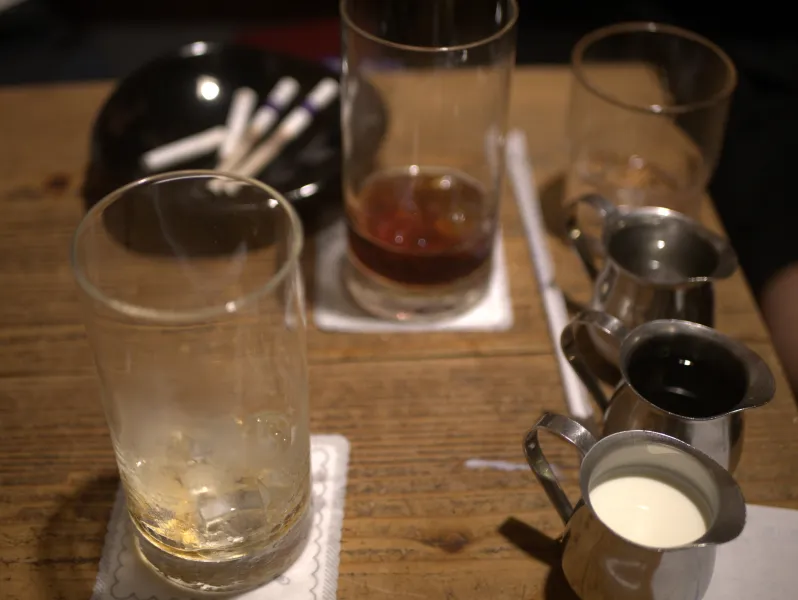
“You have certain famous creators, like that artist Sophie who passed away recently, or if you go back ten years, Skrillex,” Yamaoka says. “These artists have talked about their appreciation for Japanese music; I think they’re all watching what we do. And in Skrillex’s case, he incorporated some of those inspirations in his own interpretation of dubstep, and that totally took off. But Japanese creators – what they create fuels and inspires foreign artists, who then build on and reiterate and find success with these ideas. But Japanese artists? For some reason, halfway through, it’s like they just run out of steam. This is true for young Japanese, too; they just aren’t able to sustain it into a culture or genre. And I’ve asked myself many times, why is that?”

“Japanese people are so good at combining things and making something new, but why can’t they sustain and develop those ideas,” he continues. “And how could we build an environment that fosters more sustained creative endeavors?”
He doesn’t have a definitive answer, but Yamaoka brings up different ideas in which he thinks older, established creators in the country could be doing more to boost younger artists. One example is Bokeh’s own “Golden Hour” YouTube series, in which Toyama speaks with mainstays of the Japanese game industry. So far, it’s had on current head of PlayStation indies and former boss of Sony Computer Entertainment Shuhei Yoshida, Resident Evil creator and Tango Gameworks founder Shinji Mikami, and Devil May Cry and Dragon’s Dogma director Hideaki Itsuno. It’s a fantastic series, full of interesting development anecdotes, but Yamaoka wonders if Bokeh should be having on younger creators or more people from Japan’s burgeoning independent development scene. Perhaps to his point, Bokeh recently profiled one of its younger programmers, Tatsuya Matsushita, who spoke candidly about his worries about the development of Slitterhead. It was a refreshing video to see from a developer, where a newer face was given the opportunity to both tell their story and speak candidly about their work.
///
Throughout the few hours I spend with Yamaoka, our conversations drift all over the place, never really settling on a central thesis beyond, “Hey, why do you think Jinbōchō is cool?” Even then, given how much the area has changed and gentrified since he worked on Silent Hill decades ago, the answer is complicated and all over the place.
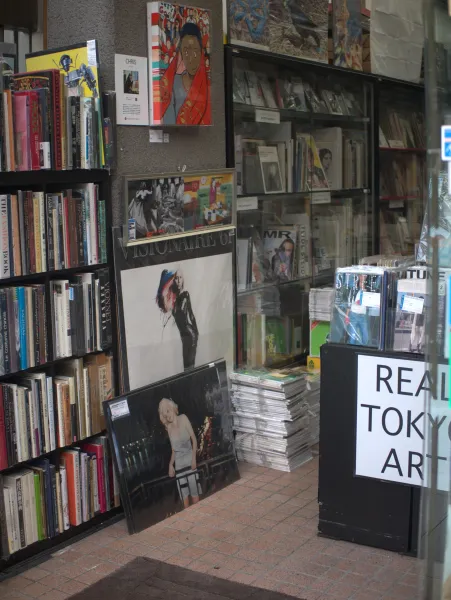
But when I think about it, our aimless conversations make sense. One of Yamaoka’s defining traits, and his greatest strength as an artist, is the way he never sticks to one idea; throughout his career, he’s constantly oscillated on a project-by-project and song-by-song basis between sounds, influences, and genres.
As he tells it, that’s partly by design; he doesn’t write game music with a clear idea in mind. “For Slitterhead, I use a development tool to insert and test the sounds in real-time,” Yamaoka says. “‘Oh, this sounds wrong.’ ‘Ah, this is much better.’ It’s that kind of trial-and-error process. I think that’s the best approach for game sound design, also. It’s a bit different from writing regular music. With game music, there’s, first and foremost, a game. So I play the game in real-time while I’m trying out sounds, over and over, to see what impression the sound makes in each moment.”
Taking that into account, thinking about our various conversations, and of course, Jinbōchō itself, with its once-disorderly and chaotic streets, I think, teaches me more about Yamaoka as an artist than any single question ever will. It’s just that, naturally, it’s a long, winding, and messy route to figuring that out.
GOING HOME
There are a million different ways to see a city. You can stick to the tour guides and destination spots or go it alone and lose yourself for hours in unfamiliar streets. You can create a rigid itinerary or wake up every day with no agenda, your only plan being spontaneity. But your best bet might be seeing it through the eyes of someone who lives there, who’s spent decades learning its streets, seeing it change, and pulling from it for inspiration.
Cities are symbiotic. They give humans their livelihoods, families, and communities, and in turn, people build cities up, change them, and give them identity. You can’t learn that on your own if you’re not from a place – at least not if you only have a week in a city as large as Tokyo. You need help seeing that for yourself.
I’ve seen far more of Tokyo at this point than I have of Slitterhead; I have no clue how areas as vastly different as Noge, Ueno, or Jinbōchō will find their way into the game – not to mention every other Bokeh developer I didn’t talk to, each pulling from their own wells of inspiration.
But I know they will be there somehow or in some way. Video games are made in offices, often bland, usually boring buildings filled with row after row of cubicles. But they’re made about places, often exciting, usually unique settings that can only exist in the specific few miles they inhabit on Earth, made that way by the people who call their streets home. Where you live always affects what you make.
Special thanks to Alex Highsmith, who provided post-interview re-translation.
For all the latest Gaming News Click Here
For the latest news and updates, follow us on Google News.

